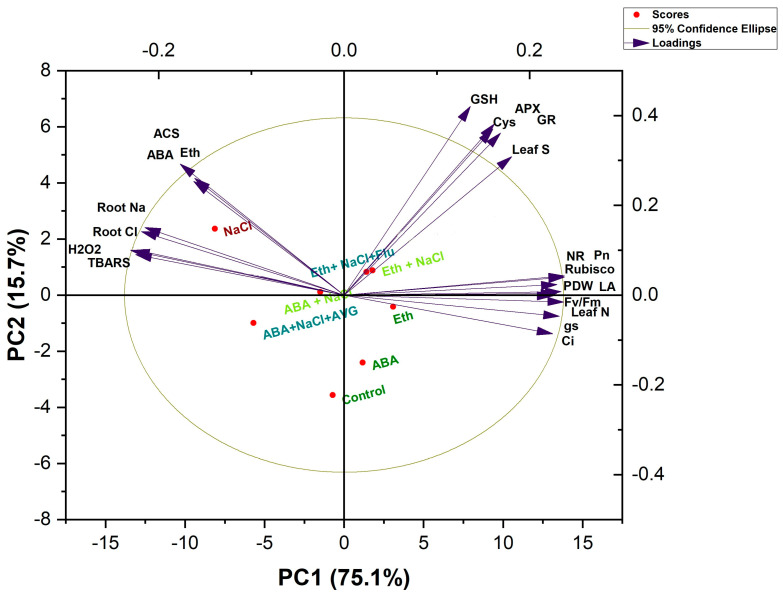Figure 5.
Principal component analysis (PCA) biplots to show connections between various treatments and variables in 30-days-old mustard (Brassica juncea L. cv. Pusa Vijay) seedlings. The diverse conditions are as follows: control; NaCl (100 mmol); Eth (2.0 mmol); ABA (25 µmol); AVG (0.01 µmol); Flu (25 µmol); Eth + NaCl; ABA + NaCl; ABA + NaCl + AVG; Eth + NaCl + Flu. ABA: abscisic acid; AVG: aminoethoxyvinylglycine (ethylene biosynthesis inhibitor); ET: ethylene; Flu: fluoridone (ABA biosynthesis inhibitor). The variables included ABA (abscisic acid), ACS (aminocyclopropane-1-carboxylic acid), APX (ascorbate peroxidase), Ci (intercellular CO2 concentration), Cys (cysteine), ET content, GR (glutathione reductase) activity, Gs (stomatal conductance), GSH (glutathione) content, H2O2 (hydrogen peroxide), K+ (potassium) content, LA (leaf area), N (nitrogen) content, Na+ (sodium) content, NR (nitrate reductase) activity, PDW (plant dry weight), Pn (net photosynthesis), PSII (maximum efficiency of PSII), Rubisco activity, S (sulfur) content, SOD (superoxide dismutase) activity, SPAD value, and TBARS (thiobarbituric acid reactive substances) content.

